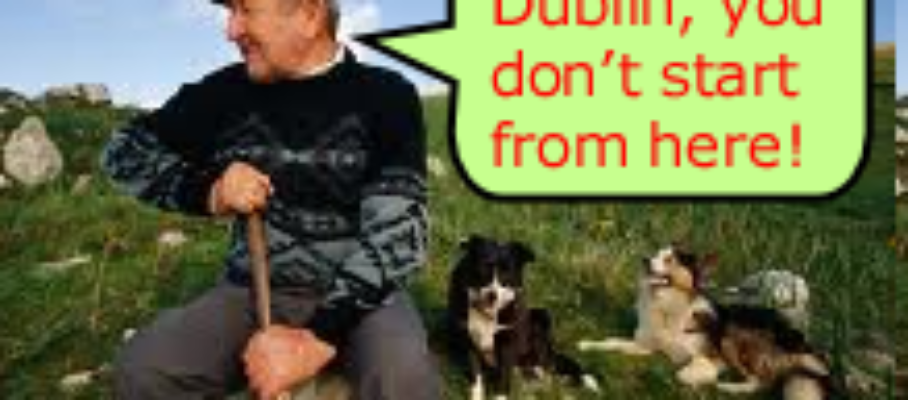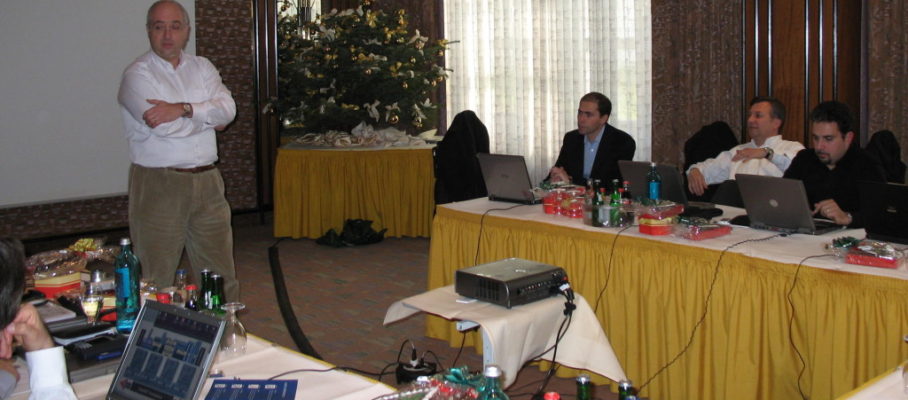Oct 22 2011
This is a poll for managers and engineers
This is a poll for managers and engineers working in factories: how to you use manufacturing data? Please answer on http://linkd.in/ogOsOv, and comment if none of the choices fit you.
Oct 22 2011
This is a poll for managers and engineers working in factories: how to you use manufacturing data? Please answer on http://linkd.in/ogOsOv, and comment if none of the choices fit you.
By Michel Baudin • Polls 3 • Tags: Data mining, Information systems, Information technology, IT, Lean manufacturing

Oct 22 2011
Question from Pedro Burgos: You have an assembly line where ‘Standardized Work’ is not utilized. The operators have ‘work instructions’ and follow them. They do not miss steps. But there are differences between operators in how the work is performed in terms of sequence. All of them perform under takt time, some more than others. Due to ‘wastes’ of motion. You are asked to do a Kaizen to reduce inventory quantities and space. Inventory quantities on the production floor varies, some parts have 3 days of inventory, some have 2 days, some have 1 day (16 hours). The goal is a ‘kanban’ of 2 hours of inventory in the assembly line. Do you think is possible to do this Kaizen? (Discussion in the LinkedIn Global Lean & Six Sigma Network)
Your question reminds me of the old story about asking a farmer in the countryside of Ireland how to get to Dublin, and getting the answer that “you don’t start from here.” In fact, regardless of its current state, a production line can always be improved.
Looking further at the way you describe the challenge, however, several things disturb me. First, while Kaizen, meaning improvement, is always possible, “a Kaizen” seems to designate a Kaizen event, a project template which is not always appropriate. Second, your description suggests opportunities for productivity and quality improvement, but neither is stated as an objective.
A top-down mandate to use a particular method to pursue two goals like inventory and space reduction does not strike me as a recipe for success. Instead, someone needs to do the following:
1. Take a close look at this assembly line.
2. Identify improvement opportunities in all dimensions of its performance.
3. Select one or two to pursue in priority based on improvement potential, technical feasibility, and human feasibility.
4. Determine the project management approach based on content, rather than the other way around.
This approach is much more likely to achieve the desired inventory and space reductions, among other improvements, than just running a Kaizen event to pursue these objectives directly and exclusively.
By Michel Baudin • Management 1 • Tags: industrial engineering, Kaizen, Lean manufacturing, Manufacturing engineering
Oct 20 2011
Check out “Manufacturing Data Mining and Beyond 6σ: Two Webinars on November 15 and 16,…” http://bit.ly/qGeTeK via @eventbrite, @mfgdatamining, @beyondsixsignma, #lean, #datamining, #kaizen, #logistics, #tps, #quality
By Michel Baudin • Events 0 • Tags: Data mining, Lean manufacturing, Manufacturing

Oct 19 2011
In an article on this topic in Industry Week today, Ralph Keller asserts that Continuous Improvement is focused on business processes rather than technology.
However, if you wrap tinfoil around the feet of a welding fixture to make it easier to clean, replace bolts with clamps on a machine to reduce setup time, or mount a hand tool on the machine on which it is used, it usually counts as Continuous Improvement but involves technical changes to work that I don’t think anyone would describe as business processes.
Yes, Continuous Improvement is done without expensive technology, but it does involve cheap technology.
Ralph Keller also reminds us that Continuous Improvement is not “rocket science,” which implies that it is easier. I agree that it is different, but not easier. I don’t know any rocket scientist with the skills to facilitate Continuous Improvement.
By Michel Baudin • Management 0 • Tags: Continuous improvement, industrial engineering, Kaizen, Lean manufacturing, Manufacturing engineering

Oct 16 2011
Communicating face to face is supposed to be more effective than electronically. Yet it is common today to see professionals travel thousands of miles to be in the same room and then engage in parallel play on their laptops while one of them is giving a presentation. The speaker stands in front of tables arranged in a U, facing a wall of open laptops. The people behind are silent and focused, and seldom make comments or ask questions. They appear to be taking notes, but in fact, they are completing an unrelated budget spreadsheet, checking emails, or playing solitaire.
It takes the presentation skills of a Steve Jobs to successfully compete for attention with the rest of the world coming to each seat through the web, and most speakers do not have these skills, especially when in a foreign language, and it is also quite possible that the information they have to convey does not lend itself to an entertaining presentation, but today’s business audiences make no allowance for this. The notion of giving each person a polite hearing, as taught in elementary school, is gone.
The intrinsic discourtesy of this behavior, however, is not the main problem. By providing escapes,web-connected laptops make badly-organized, boring meetings bearable, and allow them to continue unchallenged. Possibly the most tedious of all business rites, the regular staff meeting involves members of a department standing up one after the other and giving a status update on issues that are usually of interest only to themselves and the manager. Without laptops, some members would fall asleep and snore, and others would eventually rebel against this waste of time. And this would lead to a positive change. Wired in to their laptops, they don’t challenge the status quo.
A few years ago, cell phones routinely disrupted meetings, with their owners leaving the room to take the calls, which were obviously more important than anything the people present in the flesh might have to say. Today, cell phones disruptions are abating, as meeting participants usually comply with requests to turn them off, or, even better, to “turn them back on at the end of the meeting, so that they don’t miss their important calls.” The current situation with laptops, however, is not sustainable. It is a technology-induced problem, that technology may actually solve. Laptops are an endangered species, likely to be replaced with tablets that do not provide the same kind of visual shield as a raised laptop screen. Already today, people who bring iPads to meetings actually participate in the meetings, as doing otherwise would be too conspicuous.
By Michel Baudin • Management 0 • Tags: industrial engineering, Management
Oct 23 2011
Why production matters
On LinkedIn Lean Business Process group, Ralph Bartelmann asked the following:
Is it really the matter to squeeze the last cent out of production ? In many environments production costs represent a minor part of the over all product cost. Following Pareto reasoning it seems more reasonable to work on other parts of the value stream like supplier developpement, product design etc. What is your opinion and experience ? What are the real challenges ?
Following is my answer:
It’s not about what production costs but about what it does for the business. Improving production is about making is faster, better, safer, less tedious,… and cheaper. It needs to be faster to make you more responsive, better so that production does not introduce defects that harm your reputation, safer and less tedious so that you can retain your work force and grow its skills.
If you improve on all these fronts, guess what? Your costs go down, and not only in production but in other parts of the value stream too, because they are not independent of production. For example, there is no point in trying to develop just-in-sequence suppliers unless you practice leveled-sequencing (a.k.a. Heijunka) in your assembly line.
A manufacturing company ignoring production is an army ignoring combat on the grounds that more money is spent moving soldiers and keeping them supplied.
Share this:
Like this:
By Michel Baudin • Management 0 • Tags: industrial engineering, Lean manufacturing, Manufacturing engineering